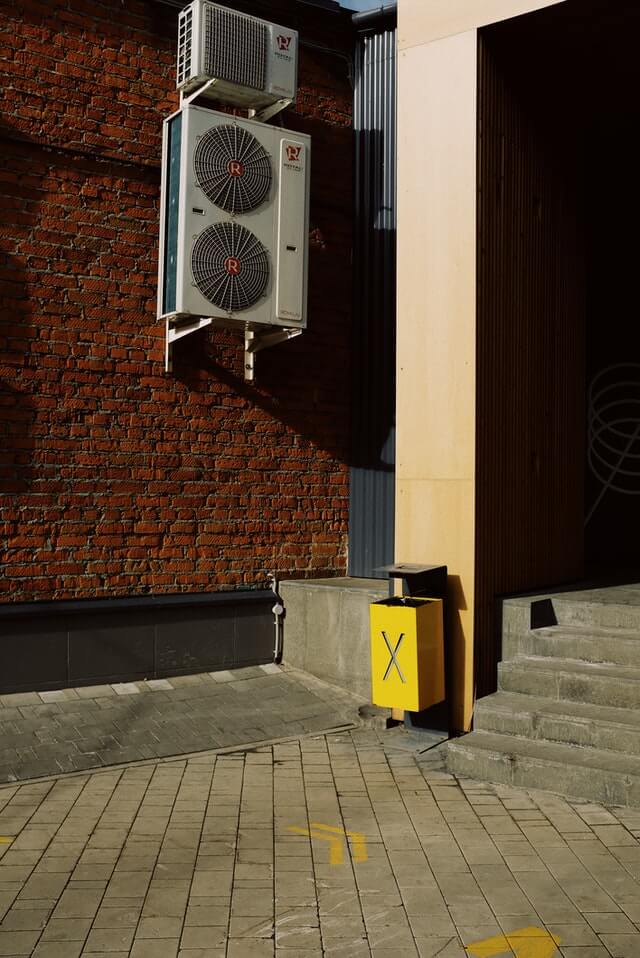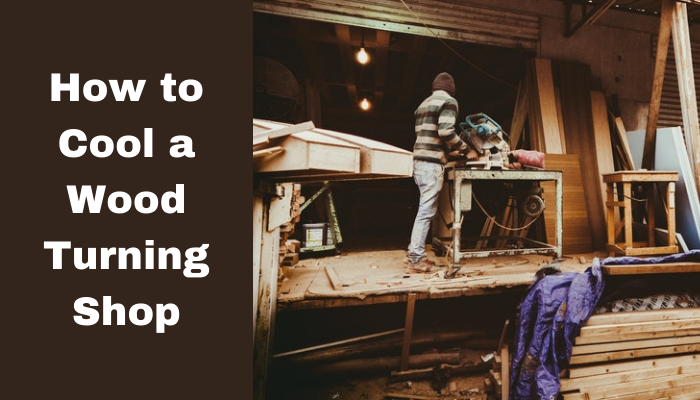So how hot is it in your woodturning shop? Is the heat unbearable during the summer? If so, don’t let that stop you from doing something that’s fun and fulfilling. In fact, there are many ways to cool off a woodturning shop! This article will talk about how to do just that.
This article will be broken down into three main topics: air conditioning, ventilation, and shades for windows.
How To Cool A Woodturning Shop
Here are some methods on how to cool a woodturning shop:
Air Conditioning
Upgrading the HVAC in a woodshop can be a big project, so if you have space and budget for it, this may be the ideal solution. However, when upgrading an HVAC unit, don’t just opt for the cheapest option available. Make sure to check how well their BTU ratings stack up. This is how much heat an HVAC unit can remove from the room. The higher the BTU, the better.

It’s also important to note how well it cools down the entire room, not just where the air conditioner itself is located. Sometimes you’ll find that just having an AC unit in your woodshop will cool down your immediate area. But other areas of the woodshop will remain hot. Keep this in mind before you decide how to cool a woodturning shop down.
In a woodshop, there’s another potential problem that might arise from running a regular home air conditioner. Blockages due to dust. One solution is to duct tape an inexpensive fiberglass furnace filter in front of the unit. This will serve as a pre-filter. To keep the air conditioner in good functioning order, clean the pre-filter and the built-in filter every day (often) by blowing it clean with compressed air.
Evaporative coolers are a less expensive alternative to traditional air conditioners. They employ a strong fan to draw heated air over water-moistened pads, where it is cooled by the process of evaporation. The air exiting is not only cooler in terms of temperature, but it also creates a breeze that makes the ambient temperature of a room feel several degrees lower than it actually is.
Ventilation
By installing ventilation, you can help control how much moisture is in the air inside your shop. This helps keep the humidity levels down so that they aren’t too high or low.
High humidity levels can cause a negative impact on how sharp the tools in your shop are. This is because high humidity often provides a perfect environment for wood to grow fungus and mold, which will dull blades and chisels over time.
If you have an older woodshop that doesn’t already have ventilation installed, then this might be the best option for how to cool a woodturning shop. Installing ventilation can be an easy do-it-yourself project, or you might want to hire someone who has experience with how to cool down a woodshop.
Shades
Installing blinds on your windows is one of the cheapest ways how to cool a woodshop. This method doesn’t require any installation, and you can start using it right away.
The main problem with this option is that if you’ll be turning in the summer when the sun is at its peak , then your light source will no longer be so bright. If you have a project that requires lots of light coming through the windows, then this option may not be for you and how to cool a woodshop.

Trees and vines
If you have a yard, what about planting trees and plants in front of your windows to block out the sun? Plants also help filter pollutants from the air.
Besides that, they look pretty good too! Even if they don’t provide enough shade or block direct sunlight from shining in, at least they look nice and help absorb some of the noise.
Vines can be especially helpful because they can climb up and around your window frames, blocking out some light as well as absorbing noise.
Insulation
The easiest approach to keep heat out of the workplace is to properly insulate it. Insulation makes it more difficult for heat to seep through walls and ceilings, as well as keeping the heat in on chilly days.
If your woodshop already has insulation, then you’re one step ahead. However, if your shop doesn’t have any insulation, it might be worth looking into how much it would cost to insulate it yourself. This can be an expensive project, but it’s one that will definitely help how to cool a woodshop down.
And don’t forget how important ventilation is! Even with insulation, your heat still needs an escape route if you plan on keeping your shop cool for long periods of time. This can be done through windows or vents. Make sure the paths are clear so that the cooled air can get out.
Sealing up leaks and gaps also helps how to cool a woodshop down because it keeps warm outside air from seeping in, where it will only help make things hotter.
Getting the Heat Out
When it’s time to remove the warm air from your shop, the most popular choices are to cool it or exchange it for cooler outside air. Simple ventilation is the best method to eliminate heated inside air and, if you live in a temperate region, may be the sole means of cooling your store.
If you live in a region that gets extremely hot and humid during the summer, then you might want to invest in some heavy-duty air conditioning. This will be an extra cost, but there are some models out there that can cool a woodshop down and are easier on your wallet.
If your store is located in a location that receives afternoon wind, you can use various methods to cool it down by opening windows or doors on the side the breeze is coming from as well as opening a skylight, window, or vent on the other wall to let out the hot air.
If the wind is light or non-existent, you might use one or more box fans to ventilate from the cooler side of the structure out on the hotter side.
Finally, the best setup is to use fans in both locations to create a “push-pull” system that exhausts hot air while drawing in cool air.
If your business has an attic space above the ceiling, make sure hot air is able to flow freely from the attic, either via gable or roof ridge vents. You may also install a ventilator turbine on top of the roof and utilize the outside wind to remove heated air from an attic or retail store with an open ceiling.
If you want to use ventilation to cool your business, remember that both heat and humidity levels must be lowered. Replace hot incandescent and quartz bulbs with cooler fluorescents, relocate dust collectors and compressors to a closet or detached shed, and change out the air conditioner for one that is more efficient.
Dehumidifiers
Having too much moisture in the air within your store is also an issue: rusted tools, finishing issues, wood with too-high moisture content, and so forth. Reducing airborne moisture not only solves these problems but can also make you feel cooler.
When it’s hot, perspiration aids in the return of a person’s skin temperature to a more comfortable level. Dry air encourages evaporative cooling, while damp air inhibits it. A portable electric dehumidifier may make your store seem cooler. ven if the ambient temperature stays the same because it removes moisture from the air. This is most effective in enclosed spaces like woodshops.
Conclusion
In the summer, a woodturning shop can be an uncomfortable place to work. However, with some clever design and creative problem solving you can make your space bearable during those hot months of July and August.
We’ve provided many different ways here that will help you keep your workplace cool and comfortable for both employees and customers alike. If any of these strategies sound like they could benefit you or your business then we encourage you to try them out!
